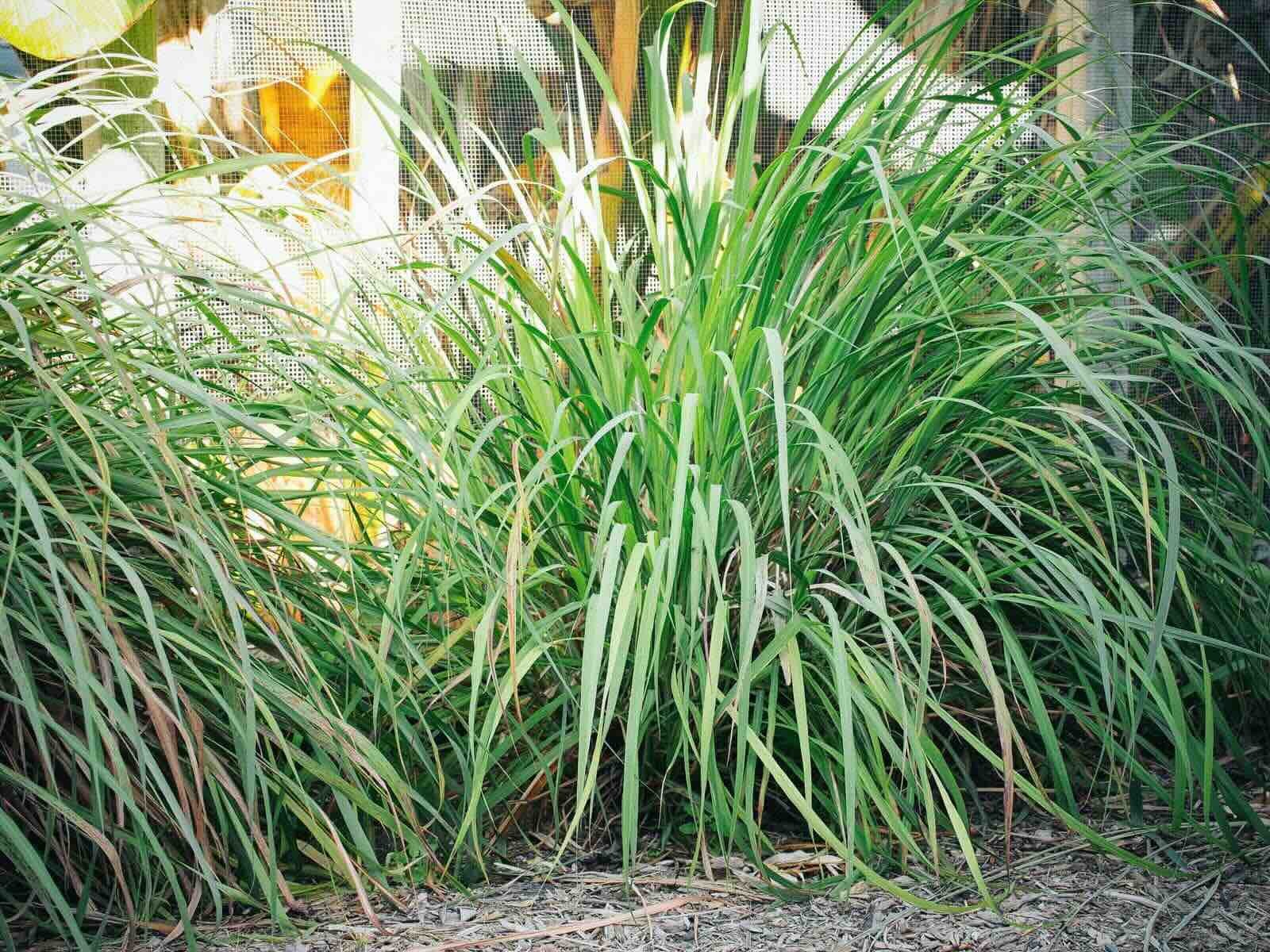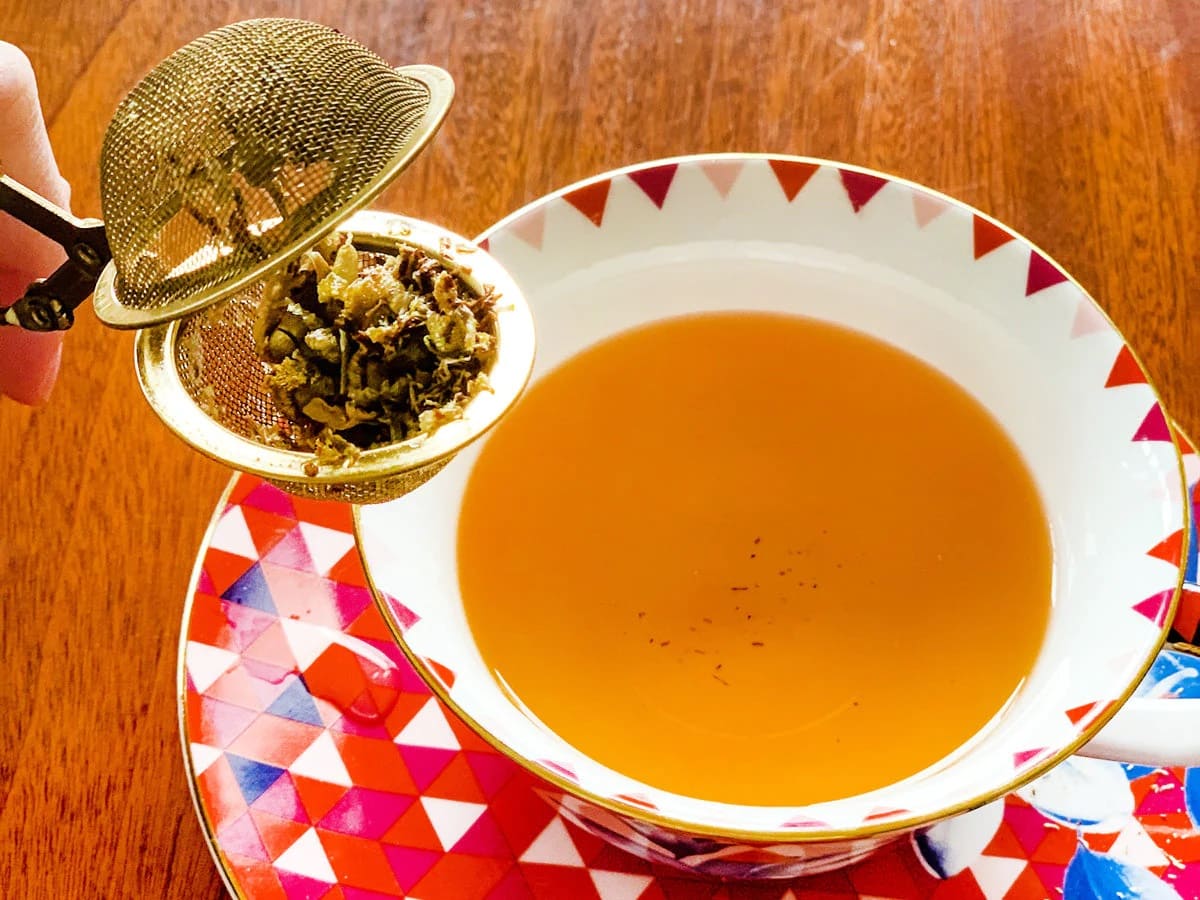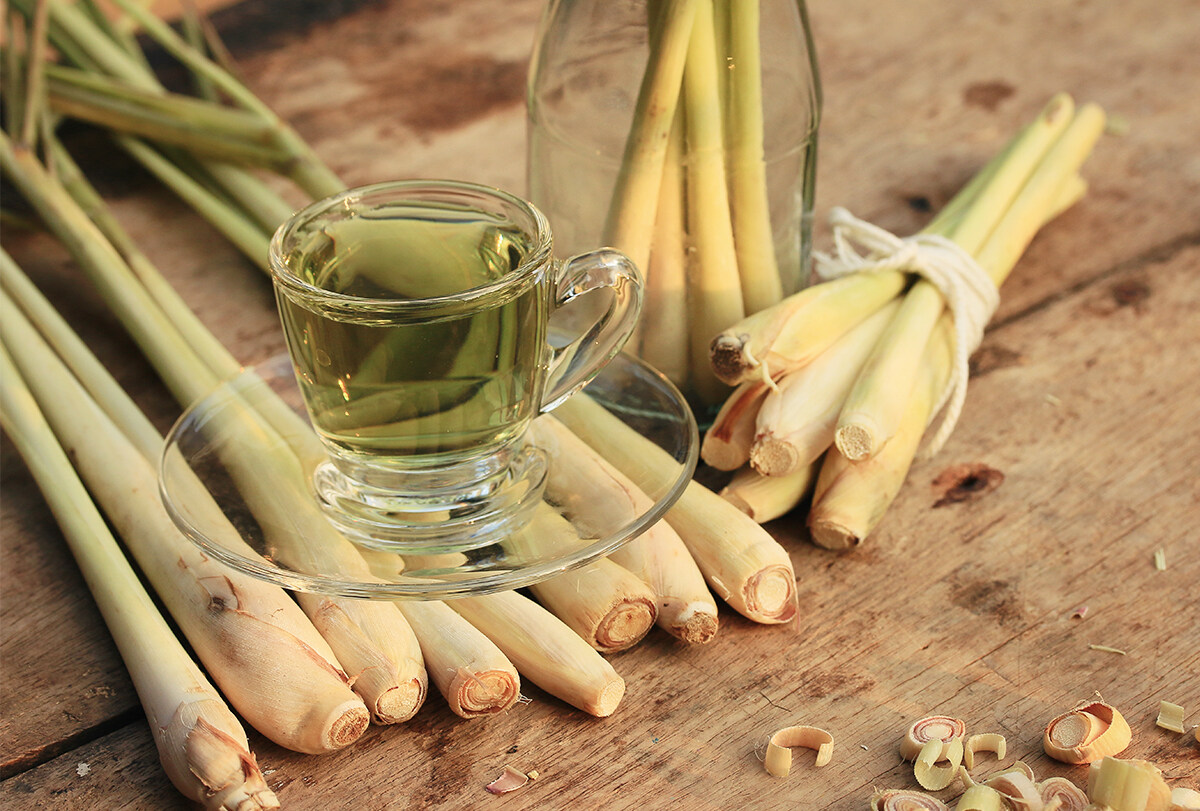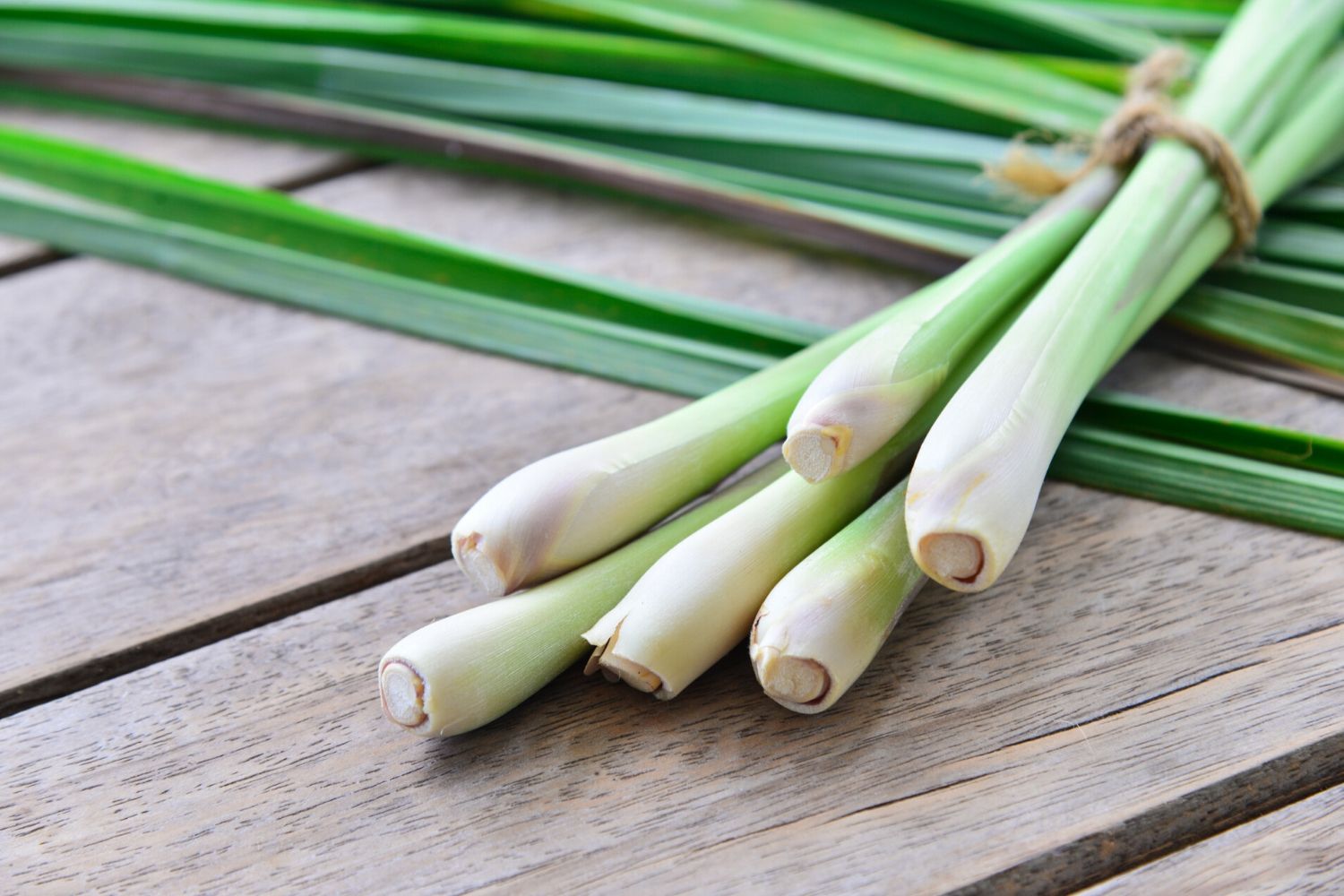Home>Gardening & Outdoor>Landscaping Ideas>How To Use Lemongrass Leaves


Landscaping Ideas
How To Use Lemongrass Leaves
Modified: March 25, 2024
Discover creative landscaping ideas and learn how to use lemongrass leaves to enhance your outdoor space. Explore tips and techniques for incorporating lemongrass into your landscaping projects.
(Many of the links in this article redirect to a specific reviewed product. Your purchase of these products through affiliate links helps to generate commission for Storables.com, at no extra cost. Learn more)
Introduction
Lemongrass, with its refreshing citrusy aroma and a hint of ginger flavor, is a versatile herb that has been cherished for centuries in various cultures. Its culinary and medicinal uses have made it a staple in many households, and its popularity continues to grow as more people discover its incredible benefits. In this article, we will explore the numerous ways to use lemongrass leaves, from enhancing the flavor of dishes to reaping its health advantages and incorporating it into skincare routines.
Lemongrass leaves, also known as Cymbopogon, belong to the grass family and are characterized by long, slender blades and a distinct lemony scent. This herb is native to tropical regions such as Southeast Asia, where it thrives in warm, humid climates. It is widely cultivated for its culinary and medicinal properties, and its essential oil is a common ingredient in aromatherapy and skincare products.
Whether you are an avid cook, a wellness enthusiast, or someone looking to elevate your self-care rituals, lemongrass leaves offer a myriad of possibilities. From brewing a soothing cup of lemongrass tea to harnessing its antibacterial and anti-inflammatory properties in skincare, this herb has something to offer everyone. Join us as we delve into the fascinating world of lemongrass leaves and uncover the secrets of incorporating this extraordinary herb into your daily life.
Key Takeaways:
- Lemongrass leaves offer a versatile and refreshing addition to culinary dishes, herbal teas, and skincare routines, infusing a delightful citrusy flavor and potential health benefits into daily life.
- Harvesting and storing lemongrass leaves is a simple yet rewarding process, allowing you to enjoy their vibrant flavors and aromatic qualities to the fullest in culinary and wellness pursuits.
Read more: How To Store Lemongrass Leaves
What is Lemongrass?
Lemongrass, scientifically known as Cymbopogon, is a tropical plant renowned for its distinct lemon flavor and citrusy aroma. This perennial herb belongs to the Poaceae grass family and is native to regions such as Southeast Asia, Africa, and Australia. It is characterized by long, slender green blades and a bulbous base, and it thrives in warm, humid climates.
One of the most remarkable features of lemongrass is its versatility. The herb is widely used in culinary, medicinal, and aromatic applications. In the kitchen, lemongrass adds a delightful citrusy zing to dishes, particularly in Southeast Asian cuisine. Its essential oil is prized for its refreshing scent and is a popular ingredient in perfumes, soaps, and candles. Additionally, lemongrass boasts a range of health benefits, making it a valuable component in traditional medicine and holistic wellness practices.
From a botanical perspective, lemongrass is composed of essential oils, citronella, and citral, which contribute to its distinctive fragrance and flavor. The plant’s essential oil is extracted through steam distillation and is used for its antimicrobial, antioxidant, and anti-inflammatory properties. This makes lemongrass a sought-after ingredient in natural remedies and skincare products.
When it comes to cultivation, lemongrass is relatively low-maintenance, making it a popular choice for home gardens and commercial farming. It thrives in well-drained soil and requires ample sunlight to flourish. With its ability to propagate through division, lemongrass is easily propagated and can be grown in containers or directly in the ground, making it accessible to gardening enthusiasts of all levels of experience.
Overall, lemongrass is a remarkable herb that offers a delightful sensory experience and a multitude of practical applications. Whether used in cooking, aromatherapy, or wellness practices, lemongrass continues to captivate people around the world with its enticing aroma and beneficial properties.
Health Benefits of Lemongrass Leaves
Lemongrass leaves are renowned for their exceptional health benefits, making them a valuable addition to a balanced and holistic lifestyle. From promoting digestion to bolstering immunity, lemongrass offers a myriad of advantages that have been cherished in traditional medicine for centuries.
One of the most notable benefits of lemongrass leaves is their potent antimicrobial and antibacterial properties. The essential oils present in lemongrass, such as citral and limonene, exhibit antimicrobial activity, making them effective in combating various pathogens. This natural defense mechanism can help protect the body against infections and support overall immune function.
Furthermore, lemongrass is revered for its digestive benefits. It contains compounds that can aid in digestion and alleviate digestive discomfort. Whether consumed as a tea or incorporated into culinary dishes, lemongrass leaves can promote healthy digestion and provide relief from common digestive issues.
Another compelling benefit of lemongrass leaves is their potential to support cardiovascular health. Research suggests that the antioxidants found in lemongrass may help regulate cholesterol levels and promote heart health. By incorporating lemongrass into your diet, you may contribute to maintaining a healthy cardiovascular system.
Moreover, lemongrass leaves possess anti-inflammatory properties, which can be particularly beneficial for individuals dealing with inflammatory conditions. The natural compounds in lemongrass may help reduce inflammation and alleviate associated discomfort, offering a natural approach to managing inflammatory issues.
Additionally, lemongrass leaves are rich in vitamins and minerals, including vitamin C, vitamin A, folate, and potassium. These essential nutrients play a crucial role in supporting overall health and well-being, contributing to the body’s immune function, cellular repair, and maintenance of vital organ systems.
Whether enjoyed as a soothing cup of lemongrass tea or incorporated into culinary creations, lemongrass leaves offer a delightful way to harness their health-boosting properties. With their refreshing citrus flavor and an array of potential benefits, lemongrass leaves stand as a testament to nature’s capacity to nurture and heal.
Culinary Uses of Lemongrass Leaves
Lemongrass leaves are a prized ingredient in culinary traditions across various cultures, renowned for their unique citrusy flavor and aromatic profile. From savory dishes to refreshing beverages, lemongrass leaves lend a delightful zing that elevates the overall taste and aroma of a wide range of culinary creations.
One of the most common culinary uses of lemongrass leaves is in savory dishes, particularly in Southeast Asian cuisine. The tender inner leaves of lemongrass are finely sliced or pounded into a paste and added to curries, soups, stir-fries, and marinades. This imparts a bright, citrusy note to the dishes, enhancing their complexity and depth of flavor.
Moreover, lemongrass leaves are often used to infuse broths and stocks, imparting a refreshing and aromatic essence to the base of various soups and stews. The leaves can be bruised to release their essential oils, adding a burst of citrus fragrance to the cooking liquid.
Another popular use of lemongrass leaves is in beverages, particularly in the preparation of herbal teas and refreshing infusions. By steeping fresh or dried lemongrass leaves in hot water, a soothing and fragrant tea can be crafted, offering a delightful alternative to traditional teas and infusions.
Furthermore, lemongrass leaves can be utilized in the creation of flavorful syrups and sauces. The infusion of lemongrass imparts a bright and tangy flavor to syrups, which can be used to sweeten beverages, drizzle over desserts, or as a glaze for grilled meats and vegetables.
Additionally, lemongrass leaves can be incorporated into baked goods and desserts to add a unique citrusy twist. From cakes and cookies to custards and ice creams, the aromatic essence of lemongrass leaves can infuse a delightful flavor into sweet treats, offering a refreshing departure from traditional dessert flavors.
Whether used to add depth to savory dishes, infuse beverages with a refreshing aroma, or impart a citrusy note to sweet creations, lemongrass leaves stand as a versatile and cherished ingredient in the culinary world. Their ability to enliven and enhance a wide array of dishes makes them a valuable addition to any kitchen, inviting culinary exploration and creativity.
How to Harvest Lemongrass Leaves
Harvesting lemongrass leaves is a straightforward process that allows you to enjoy the herb’s fresh, citrusy flavor and aroma in your culinary and wellness endeavors. Whether you are cultivating lemongrass in your garden or have obtained it from a local market, knowing how to harvest the leaves properly ensures that you can make the most of this versatile herb.
When it comes to harvesting lemongrass leaves, the process begins by identifying the optimal time for harvest. Ideally, lemongrass leaves should be harvested when they are young and tender, as they contain the highest concentration of essential oils and flavors. This typically occurs when the leaves are about 12-18 inches in length and light green in color.
To harvest lemongrass leaves, start by selecting a healthy and mature stalk. Using a sharp knife or garden shears, cut the stalk just above the soil level, ensuring that you leave enough of the plant intact to facilitate regrowth. Once the stalk is removed, carefully peel away the outer layers to reveal the tender inner leaves, which are the most flavorful and aromatic part of the plant.
When harvesting lemongrass leaves, it is important to handle them gently to avoid bruising or damaging the delicate blades. To preserve their freshness and flavor, it is advisable to use the harvested leaves promptly. However, if you need to store them for future use, they can be refrigerated in a plastic bag or container for a few days, or frozen for longer-term preservation.
If you are growing lemongrass in your garden, regular harvesting promotes healthy growth and encourages the plant to produce fresh leaves continuously. By harvesting the outer stalks and leaves periodically, you can stimulate new growth and ensure a bountiful supply of lemongrass leaves for your culinary and wellness pursuits.
Overall, harvesting lemongrass leaves is a simple yet rewarding endeavor that allows you to savor the herb’s vibrant flavors and aromas. Whether you are cultivating lemongrass at home or procuring it from local sources, mastering the art of harvesting ensures that you can enjoy the full potential of this versatile and beloved herb.
To use lemongrass leaves, remove the tough outer layers and use the tender inner leaves for flavoring soups, curries, and teas. You can also infuse them in hot water for a refreshing lemongrass tea.
Read more: How To Use Lemongrass
Storing Lemongrass Leaves
Properly storing lemongrass leaves is essential to preserve their freshness, flavor, and aromatic qualities, ensuring that they remain vibrant and ready for use in culinary and wellness applications. Whether you have harvested lemongrass from your garden or purchased it from a market, employing suitable storage methods allows you to extend the shelf life of this versatile herb.
When it comes to storing freshly harvested lemongrass leaves, it is crucial to handle them with care to maintain their delicate texture and aromatic properties. After harvesting, the leaves should be cleaned to remove any dirt or debris and dried gently with a clean cloth or paper towel. Once cleaned and dried, the leaves can be stored in airtight containers or resealable plastic bags to preserve their freshness.
If you plan to use the lemongrass leaves within a few days, refrigeration is an effective method of storage. Place the leaves in a plastic bag or airtight container and store them in the refrigerator. This helps maintain their moisture content and prevents wilting, ensuring that they remain crisp and flavorful until you are ready to use them.
For longer-term storage, lemongrass leaves can be frozen to retain their flavor and aroma. To freeze lemongrass leaves, arrange them in a single layer on a baking sheet and place them in the freezer until they are firm. Once frozen, transfer the leaves to airtight containers or resealable freezer bags, removing as much air as possible before sealing. Properly frozen lemongrass leaves can retain their quality for several months, allowing you to enjoy their vibrant flavors at your convenience.
Another method of preserving lemongrass leaves is by drying them. This technique involves air-drying the leaves in a well-ventilated area away from direct sunlight until they are thoroughly dried. Once dried, the leaves can be stored in airtight containers in a cool, dry place. Dried lemongrass leaves can be used to infuse teas, create herbal blends, or add a subtle citrusy flavor to culinary dishes.
When storing lemongrass leaves, it is important to label the containers or bags with the date of storage to keep track of their freshness. Additionally, storing the leaves away from strong-smelling foods and spices helps prevent them from absorbing unwanted odors, preserving their natural aroma and flavor.
By employing suitable storage methods, you can prolong the shelf life of lemongrass leaves and ensure that they remain vibrant and flavorful for use in a diverse range of culinary and wellness pursuits. Whether refrigerated, frozen, or dried, properly stored lemongrass leaves stand ready to infuse your creations with their delightful citrusy essence.
Using Lemongrass Leaves in Tea
Lemongrass leaves offer a delightful and aromatic addition to herbal teas, infusing the brew with their refreshing citrusy flavor and soothing properties. Whether enjoyed hot or cold, lemongrass tea provides a rejuvenating and flavorful experience, making it a popular choice for tea enthusiasts and wellness seekers alike.
To prepare lemongrass tea, start by gathering fresh or dried lemongrass leaves. If using fresh leaves, ensure they are clean and free from any dirt or debris. Dried lemongrass leaves can also be used, offering a convenient option for long-term storage and use. Once you have the leaves ready, you can proceed to infuse them into a delightful cup of tea.
For hot lemongrass tea, place a handful of fresh or dried lemongrass leaves in a teapot or heatproof container. Bring water to a boil and pour it over the leaves, allowing them to steep for 5-10 minutes. This allows the aromatic oils and flavors of the lemongrass to infuse into the water, creating a fragrant and flavorful brew. Once steeped, strain the tea to remove the leaves and enjoy the soothing and citrusy essence of lemongrass.
If you prefer iced lemongrass tea, you can follow a similar process by steeping the leaves in hot water and allowing the infusion to cool. Once the tea has reached room temperature, it can be poured over ice and garnished with a slice of lemon or a sprig of fresh mint for a refreshing and invigorating beverage.
Lemongrass tea can be enjoyed on its own or combined with other complementary herbs and spices to create unique blends. For added depth of flavor, consider incorporating ingredients such as ginger, mint, or lemongrass essential oil to enhance the aromatic and sensory experience of the tea.
Aside from its delightful flavor, lemongrass tea offers a range of potential health benefits. The natural compounds present in lemongrass, such as citral and antioxidants, contribute to its soothing and calming properties. Additionally, lemongrass tea is often cherished for its digestive benefits, making it a comforting and supportive choice for promoting healthy digestion.
Whether enjoyed as a warm cup of relaxation or a refreshing iced beverage, lemongrass tea stands as a versatile and cherished infusion that embodies the invigorating essence of lemongrass leaves. With its delightful citrusy flavor and potential wellness benefits, lemongrass tea offers a delightful way to savor the unique qualities of this remarkable herb.
Lemongrass Leaves in Skincare
Lemongrass leaves, with their invigorating aroma and beneficial properties, have found a valued place in skincare routines, offering a natural and refreshing approach to nourishing and rejuvenating the skin. From cleansing and toning to providing aromatherapy benefits, lemongrass leaves bring a delightful touch of citrusy freshness to skincare regimens, promoting a revitalizing and sensory experience.
One of the primary uses of lemongrass leaves in skincare is through their incorporation into cleansing and toning preparations. The essential oils present in lemongrass offer natural astringent properties, helping to cleanse and refine the skin. Whether used in facial toners, cleansers, or facial steam treatments, lemongrass leaves contribute to a refreshing and invigorating skincare experience.
Moreover, lemongrass leaves are often utilized in aromatherapy practices, where their uplifting scent can promote a sense of rejuvenation and relaxation. By infusing skincare products such as body scrubs, bath salts, and massage oils with the essence of lemongrass, a revitalizing and aromatic experience can be achieved, enhancing the overall sensory appeal of the skincare regimen.
Additionally, the natural compounds present in lemongrass leaves, such as citral and limonene, offer potential benefits for the skin. These compounds possess antimicrobial and antioxidant properties, contributing to the skin’s overall wellness and vitality. When incorporated into skincare formulations, lemongrass leaves can offer a gentle and refreshing approach to supporting the skin’s natural balance and radiance.
For those seeking a natural and invigorating addition to their skincare routine, lemongrass leaves can be infused into homemade skincare creations. From facial masks and body scrubs to bath soaks and aromatic mists, the vibrant essence of lemongrass leaves can elevate the sensory experience of skincare, providing a delightful and refreshing touch to self-care rituals.
When using lemongrass leaves in skincare, it is important to consider individual sensitivities and perform a patch test to ensure compatibility with the skin. As with any skincare ingredient, it is advisable to use lemongrass leaves in moderation and in accordance with recommended guidelines to achieve the desired benefits while respecting the skin’s natural balance.
Overall, lemongrass leaves offer a refreshing and invigorating addition to skincare, infusing self-care rituals with their delightful citrusy aroma and potential wellness benefits. Whether incorporated into cleansing preparations, aromatherapy blends, or homemade skincare creations, lemongrass leaves provide a natural and sensory-rich approach to nurturing and revitalizing the skin.
Conclusion
In conclusion, lemongrass leaves stand as a remarkable herb that offers a myriad of culinary, wellness, and skincare possibilities. From their vibrant citrusy flavor to their potential health benefits, lemongrass leaves continue to captivate people around the world with their versatility and sensory appeal.
Whether utilized in the kitchen to add a refreshing zing to savory dishes and beverages or incorporated into herbal teas and skincare preparations, lemongrass leaves bring a delightful touch of invigoration and aromatic freshness to various aspects of daily life.
When it comes to wellness, the health benefits of lemongrass leaves are truly noteworthy. From promoting digestion and supporting immune function to offering potential skincare benefits, lemongrass leaves embody nature’s capacity to nurture and rejuvenate the body and mind.
Moreover, the culinary uses of lemongrass leaves span a wide range of dishes and preparations, from soups and curries to refreshing teas and flavorful syrups. Their ability to infuse culinary creations with a bright and citrusy essence makes them a cherished and versatile ingredient in the culinary world.
Whether you are harvesting lemongrass leaves from your garden or procuring them from local sources, knowing how to harvest and store them properly ensures that you can enjoy their vibrant flavors and aromatic qualities to the fullest. By mastering the art of incorporating lemongrass leaves into your daily life, you can savor the delightful essence of this extraordinary herb in a multitude of ways.
In essence, lemongrass leaves offer a sensory-rich and invigorating experience, whether enjoyed in a fragrant cup of tea, a revitalizing skincare regimen, or a flavorful culinary creation. Their delightful citrusy aroma and potential wellness benefits make them a cherished and versatile component of holistic and vibrant living.
As you explore the captivating world of lemongrass leaves, may you discover the joy and vitality they bring to your culinary adventures, wellness pursuits, and self-care rituals, enriching your daily experiences with their refreshing and aromatic essence.
Frequently Asked Questions about How To Use Lemongrass Leaves
Was this page helpful?
At Storables.com, we guarantee accurate and reliable information. Our content, validated by Expert Board Contributors, is crafted following stringent Editorial Policies. We're committed to providing you with well-researched, expert-backed insights for all your informational needs.















0 thoughts on “How To Use Lemongrass Leaves”